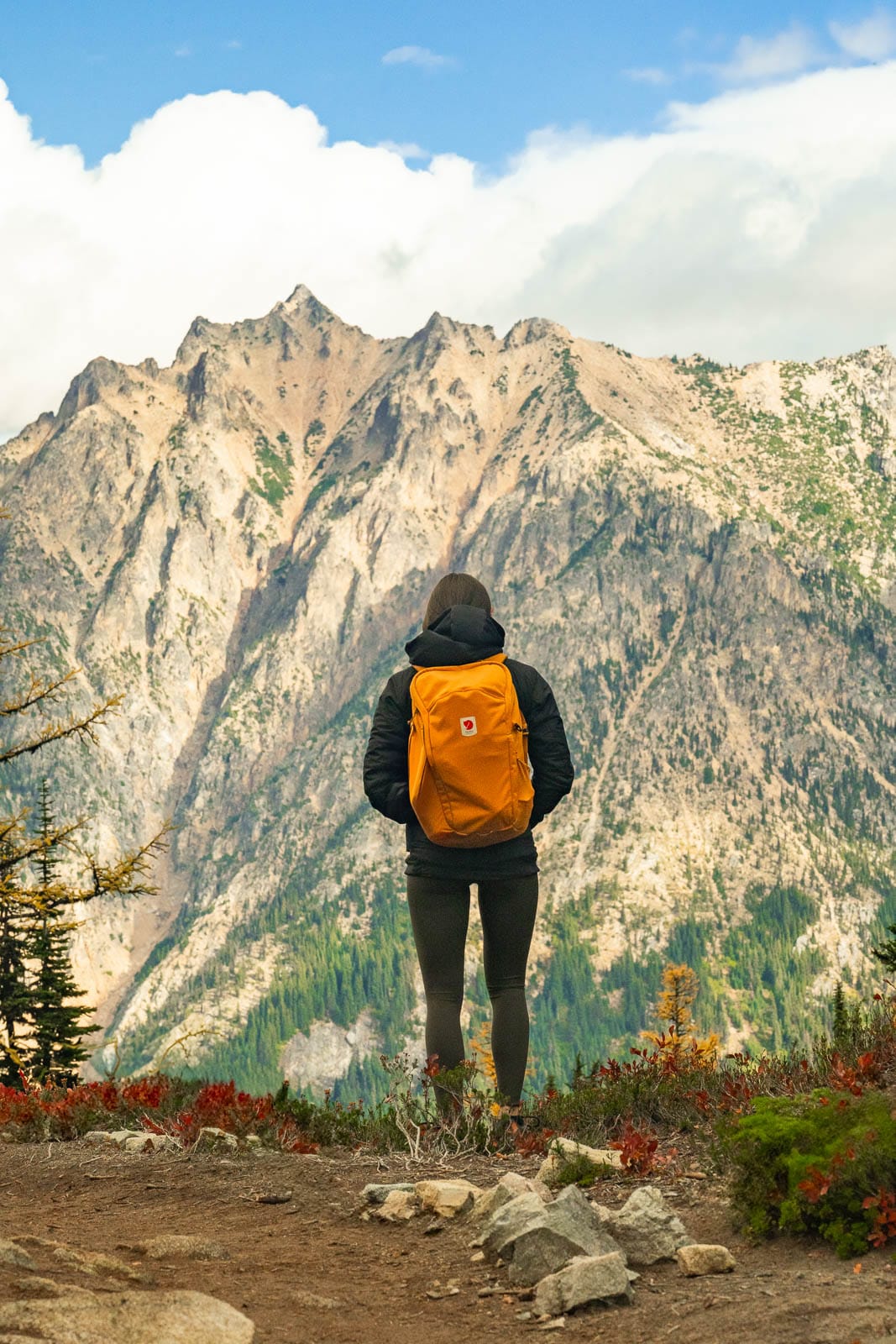📗 Hiking Guide for Maple Pass

🏔️ Overview
The Maple Pass Loop is one of the most stunning hikes in Washington’s North Cascades, offering incredible panoramic views, alpine lakes, wildflower meadows, and rugged mountain peaks. This moderately difficult hike is a favorite among nature lovers and photographers, especially during the fall when the larch trees turn a brilliant golden color. The loop provides a great mix of terrains, rewarding every step with breathtaking vistas.
💪 Trail Difficulty
Total Distance: 7.2 miles (11.6 km) loop
Elevation Gain: 2,000 feet (610 meters)
Time: 4-6 hours
Difficulty: Moderate
Best Time to Hike: Late June to October
Permit Requirement: No permit required
How do you get there, park, and navigate the trail?
🚗 Driving Instructions from Vancouver, BC:
- Take Highway 1 East (Trans-Canada Highway):
Head east on Highway 1 from Vancouver toward Hope. - Merge onto BC-3 East (Crowsnest Highway):
Take Exit 173 and follow BC-3 East toward Princeton and Osoyoos. - Cross into the U.S. at Osoyoos:
Continue onto U.S. Route 97 South after crossing the border. - Take U.S. Route 20 West (North Cascades Highway):
At Omak, take U.S. Route 20 West and follow the highway through the North Cascades. - Arrive at Rainy Pass:
The Maple Pass Loop Trailhead is located at the Rainy Pass parking area on Highway 20, about 65 miles west of Winthrop.
🚗 Driving Instructions from Seattle, WA:
- Take I-5 North:
Head north on Interstate 5 from Seattle. - Merge onto Highway 20 East (North Cascades Highway):
Take Exit 230 at Burlington and follow Highway 20 east toward Marblemount. - Drive through the North Cascades:
Continue on Highway 20 past Diablo Lake and through North Cascades National Park. - Arrive at Rainy Pass:
The Maple Pass Loop Trailhead is at the Rainy Pass parking lot on Highway 20.
🥾 Trail Instructions
1. Rainy Pass Trailhead to Lake Ann Junction
Distance: 1.25 miles (2 km)
Elevation Gain: 600 feet (180 meters)
Terrain: Well-maintained forested trail with gradual incline.
Notables: The trail begins at the Rainy Pass parking lot and follows a gently ascending path through old-growth forest. After about 1.25 miles, you’ll reach the junction for Lake Ann. You can take a short detour to see Lake Ann, but to continue the loop, stay right and head toward Maple Pass.
2. Lake Ann Junction to Maple Pass
Distance: 2 miles (3.2 km)
Elevation Gain: 1,100 feet (335 meters)
Terrain: Steeper sections with rocky and exposed areas.
Notables: After the junction, the trail starts to climb more steeply, offering spectacular views of Lake Ann below. As you ascend, the forest opens up into alpine meadows with stunning views of the North Cascades’ rugged peaks. Larches are common in fall, creating a beautiful golden backdrop. This section leads to Maple Pass, the highest point on the trail at 6,600 feet.
3. Maple Pass to Heather Pass
Distance: 1.5 miles (2.4 km)
Elevation Loss: 500 feet (150 meters)
Terrain: Rocky alpine terrain, with some exposure and gentle descent.
Notables: From the pass, enjoy jaw-dropping 360-degree views of the surrounding North Cascades, including peaks like Black Peak and Corteo Peak. The descent begins gradually, traversing a ridge with sweeping views. Heather Pass is another beautiful section of the hike with patches of wildflowers in the summer and vibrant fall colors in autumn.
4. Heather Pass to Rainy Lake Junction
Distance: 1.5 miles (2.4 km)
Elevation Loss: 900 feet (275 meters)
Terrain: Switchbacks through forested terrain, leading to a lake.
Notables: After Heather Pass, the trail descends more steeply through forested switchbacks. Keep an eye out for Rainy Lake as you descend, with glimpses of the lake’s shimmering blue waters from the trail. You’ll eventually reach a junction where you can take a short detour to Rainy Lake, a picturesque spot for a break.
5. Rainy Lake Junction to Rainy Pass Trailhead
Distance: 1 mile (1.6 km)
Elevation Loss: 400 feet (120 meters)
Terrain: Gradual, easy descent through forest.
Notables: The final stretch of the trail is an easy walk back to the Rainy Pass parking lot, through a shaded forest with more gentle switchbacks.
👇 Trail Tips, Summit Photos + Video of St Marks Summit, continued below...
🤩 Maple Pass Photos & Views









💡 Tips for Hiking the Maple Pass Loop
Start Early: The Maple Pass Loop is a popular hike, especially in the fall. Arriving early helps you avoid crowds and ensures parking.
Bring Plenty of Water and Snacks: There are no water sources along the trail, so be sure to bring enough for the day. Pack high-energy snacks for breaks at the scenic viewpoints.
Best Time to Hike: The trail is typically snow-free from late June through October. In fall, the larch trees turn golden, making late September to mid-October the most beautiful time to hike.
Wildlife: Keep an eye out for mountain goats, marmots, and other wildlife. Always give animals plenty of space and never feed them.
Permits: No permit is required for day hikes. If you plan to camp in the North Cascades National Park, you’ll need a backcountry permit.
🦺 Safety
Trail Conditions: Check weather and trail conditions before starting your hike, as snow can linger on the trail into early summer.
Navigation: The trail is well-marked, but a map or GPS is always a good idea, especially if you venture off-trail at Heather Pass or Maple Pass.
Leave No Trace: Always follow Leave No Trace principles to keep the wilderness pristine. Pack out all trash, stay on designated trails, and respect wildlife.





Member discussion